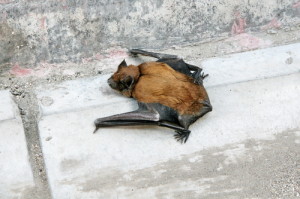Many pet parents are wondering about vaccines and the risks they pose to our pets, including the rabies vaccine. After all, most of us go our entire lives without seeing a rabid animal, let alone a rabid dog. And those living in cities with almost no contact with wildlife really wonder if the required rabies shot is necessary – and some are going as far as dodging the vaccine.
But is it a false sense of security?
In 2018, the Centers for Disease Control and Prevention (CDC) reported 4,951 cases for rabies in animals and humans in 54 U.S. jurisdictions, an increase of 11.2% from 2017. In addition, the World Health Organization reports that 15 million people worldwide get post-rabies treatment each year.
The Real Risk
Dr. Glenda Paredes, DVM is a small animal veterinarian at Parkland Veterinary Hospital in South Florida. She explains that not only has rabies NOT been eradicated, but what dog owners do not understand is how high the fatality rate is should their dog contract rabies:
Rabies has a 100% FATALITY rate.
It is RARE for a human to recover, they must get treatment immediately after exposure.
There is NO treatment for animals that have rabies.
“Thanks to more effective vaccination and the fact that more dogs are kept indoors were the exposure risk is decreased, the reported cases of Rabies infections in dogs and cats and other domesticated animals is nearly zero but that does not mean that rabies has been eradicated,” Dr. Paredes explains. “Rabies is still a very common pathogen detected in wildlife (foxes, raccoons, otters, bats, skunks, etc).”
Exposure
If your dog gets rabies, it is going to be fatal. But many dog owners think their dog won’t come in contact with diseased animals. But any mammal can have rabies and give it your dog.

“The risk for coming in contact with a rabid animal is also not zero even if pets remain indoors. Bats are a common source for exposure to rabies to indoor animals since they tend to nest in attics and fly into the house,” Dr. Paredes adds. “Cats are also at higher risk, especially if allowed to roam outside because they may come into contact with wildlife.”
And if your cat and dog come into contact with each other, rabies could be passed between them as well.
And don’t forget – they don’t have to bite! It’s passed by saliva, so if your dog has an open wound and your cat’s saliva gets in it, they could become infected. Or, you have a scratch and your dog licks you. It’s that simple (and scary).
Side-Effects
“There are labeled Rabies vaccines that can be given every 3 years which decreases the need to give it yearly, but that will also depend on the county ordinances that dictate how frequent it can legally be given,” explains Dr. Paredes. “There are times that I may not vaccinate an animal under certain circumstances (immunosuppression, cancer, previous allergic reaction) but those are far and few in between.
“The most common side effect is mild discomfort at the injection site. There are a small percentage of animals (although I really don’t have concrete numbers) that can have a reaction. From purely personal experience, I only see 2-3 reactions a year. The problem is that since they are also getting other vaccines at the same time, it is hard to tell whether it was the rabies vaccine itself, the other vaccines or too many vaccines at one time. The reactions (which is by far the most common that I see) are facial swelling, itchiness and redness. That is usually easily resolved with a cortisone injection and an antihistamine injections. More severe reactions can also include vomiting, diarrhea and lethargy (can really only recall 1 or 2). The most severe reaction would be anaphylactic shock (very rare). I have only seen 1 case of anaphylaxis and it was in a ferret (that type of reaction is more common in these guys).”
However, most animals have no issues with Rabies vaccine, she adds. And clearly these side effects (with the exception of the rare anaphylactic shock) are not life-threating, while rabies is deadly.
The bottom-line is that even though we are seeing less of rabies – thank goodness! – the reason for this is because of the vaccine. If we stop vaccinating, we would see a comeback in the deadly rabies. And if you aren’t too concerned about that, watch Old Yeller.
 Toledo, United States.
Toledo, United States.